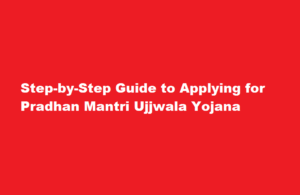The Impact of The National Rural Livelihood Mission in Poverty Alleviation
4 min read
Introduction
Poverty and lack of opportunities are significant challenges faced by rural communities in India. To address these issues, the Government of India launched the National Rural Livelihood Mission (NRLM). This flagship program aims to alleviate poverty, enhance livelihood opportunities, and empower rural communities by promoting self-employment and entrepreneurship. In this article, we will delve into the effectiveness of the National Rural Livelihood Mission in alleviating poverty and empowering rural communities in India.
Targeted Poverty Alleviation
The National Rural Livelihood Mission focuses on targeted poverty alleviation by identifying the poorest households in rural areas and providing them with comprehensive support. The program adopts a participatory approach, empowering communities to identify their own needs and develop sustainable solutions. By focusing on the most marginalized and vulnerable groups, the NRLM ensures that the benefits of poverty alleviation reach those who need it the most.
Economic Empowerment
One of the key objectives of the National Rural Livelihood Mission is to promote economic empowerment among rural communities. The program facilitates the formation of Self-Help Groups (SHGs) and provides them with financial resources, training, and technical assistance to undertake income-generating activities. These SHGs enable rural individuals, especially women, to access credit, build assets, and engage in entrepreneurial ventures, thereby creating sustainable livelihood opportunities.
Skill Development and Capacity Building
The National Rural Livelihood Mission places a strong emphasis on skill development and capacity building. The program provides training and capacity-building programs to SHG members, equipping them with necessary skills in various sectors such as agriculture, livestock rearing, handicrafts, and other non-farm activities. This focus on skill development enhances the income-generating potential of rural communities and enables them to diversify their livelihood options.
Social Inclusion and Empowerment
The NRLM promotes social inclusion and empowerment by ensuring the active participation of marginalized groups, particularly women and Scheduled Castes/Scheduled Tribes, in decision-making processes. Through community mobilization and awareness programs, the program empowers rural individuals to become agents of change in their communities. This approach fosters social cohesion, reduces social disparities, and empowers individuals to address their own development needs.
Access to Financial Services
The National Rural Livelihood Mission plays a pivotal role in enhancing access to financial services for rural communities. It promotes the establishment and strengthening of community-based institutions such as Village Organizations (VOs) and Federations of SHGs. These institutions provide access to credit, savings, and insurance services, enabling rural individuals to meet their financial needs, invest in livelihood activities, and build resilience against shocks and uncertainties.
Sustainable Development
The NRLM promotes sustainable development by integrating environmental considerations into its initiatives. The program encourages the adoption of sustainable agricultural practices, natural resource management, and eco-friendly livelihood activities. By promoting sustainable practices, the NRLM ensures the long-term viability of rural livelihoods while minimizing the negative impact on the environment.
Conclusion
The National Rural Livelihood Mission has emerged as a powerful tool in poverty alleviation and rural empowerment in India. Through targeted poverty alleviation, economic empowerment, skill development, social inclusion, access to financial services, and a focus on sustainable development, the NRLM has transformed the lives of rural communities. As the program continues to evolve and expand, it is crucial to sustain its efforts, foster entrepreneurship, and create an enabling environment for rural development, thereby ensuring a brighter future for millions of rural individuals and their communities.
Frequently Asked Questions
What is the National Rural Livelihood Mission (NRLM)?
The National Rural Livelihood Mission (NRLM) is a poverty alleviation program launched by the Government of India to empower rural communities, promote self-employment, and enhance livelihood opportunities in rural areas.
How does the National Rural Livelihood Mission alleviate poverty?
The National Rural Livelihood Mission alleviates poverty by targeting the poorest households in rural areas, providing them with support, promoting self-employment, facilitating the formation of Self-Help Groups (SHGs), and offering skill development and capacity-building programs.
What role does the National Rural Livelihood Mission play in empowering rural communities?
The National Rural Livelihood Mission empowers rural communities by promoting economic empowerment, facilitating access to financial services, fostering social inclusion, enhancing skill development, and integrating sustainable development practices into livelihood activities.
How does the National Rural Livelihood Mission benefit marginalized groups?
The National Rural Livelihood Mission benefits marginalized groups by ensuring their active participation in decision-making processes, promoting social inclusion, providing targeted support, and creating opportunities for their economic and social empowerment.
What is the long-term impact of the National Rural Livelihood Mission on rural communities?
The National Rural Livelihood Mission has a long-term impact on rural communities by creating sustainable livelihood opportunities, reducing poverty, fostering social cohesion, empowering individuals, and promoting sustainable development practices, thereby improving the overall well-being of rural communities.
Read Also : Enhancing Healthcare Access for Marginalized Populations






